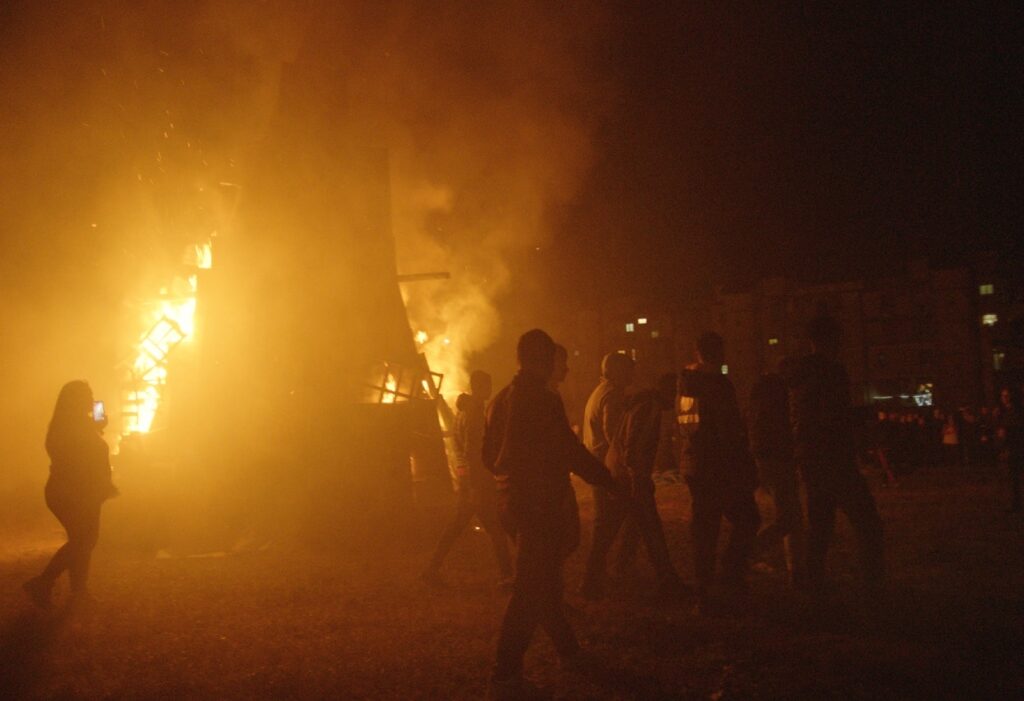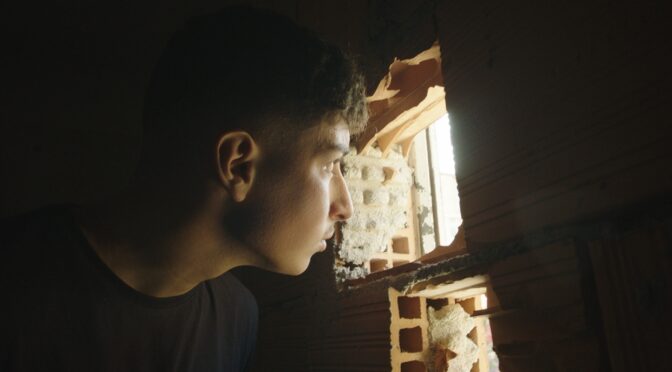Article by Valentina Testa
Translation by Chiara Rotondo
It is a customary practice in Crotone for young men to build a wooden pyramid to set fire in honour of St. Lucy on December 13th. Cooperation becomes a prerequisite for winning the friendly and traditional competition that takes place every year among the town districts to see who can build the highest and most impressive fire. “We must ensure that our Jesus Fund gets published in newspapers, and nobody else.” Even if the press won’t pay attention to them, the story of the Jesus Fund community will be told in Lux Santa (“Holy light”). This film, directed by Matteo Russo and presented as part of the 41st Turin Film Festival’s Italian documentary competition, sheds light on their experiences.
The group is animated by the strong desire of making themselves known. The director himself confirms the crucial contribution of everyone involved in the development of the film. Initially, the intention was to create a partly autobiographical documentary-reportage on the tradition of the fires that annually illuminate Crotone in celebration of the patron saint of sight. Matteo Russo and screenwriter Carlo Gallo recall that, as children, they used to go in search of wood during the first ten days of December in order to build their own pyramid. Yet, their encounters with several individuals prompted them to adopt a narrative and choral solution, along with a human and personalised approach, to steer the documentary away from a mere distanced analysis.

Fire becomes the excuse to talk about the Jesus Fund community’s narrative. Matteo Russo chooses them after meeting the protagonist Francesco Vaccaro, whose father is a prisoner, and his close friends who are willing to share their story. Through this unforeseen yet successful collaboration, an authentic and unfiltered story was produced that concludes with a nimble expression of its underlying message of personal and collective redemption within a challenging environment. “That’s how I’ve discovered the individuals, rather than characters, of my film”, states the director. The formal language style also enhances the immersive experience into the lives of the main characters: the hand-held camera is preferred, while the more static shots are reserved for the fewer scenes carrying a heightened emotional depth. The cinematic style is transparent, blending reality and fiction, resulting in a coming of age film, typical of the cinema of reality, which is not about the group’s personal growth, but follows young people’s natural development.

